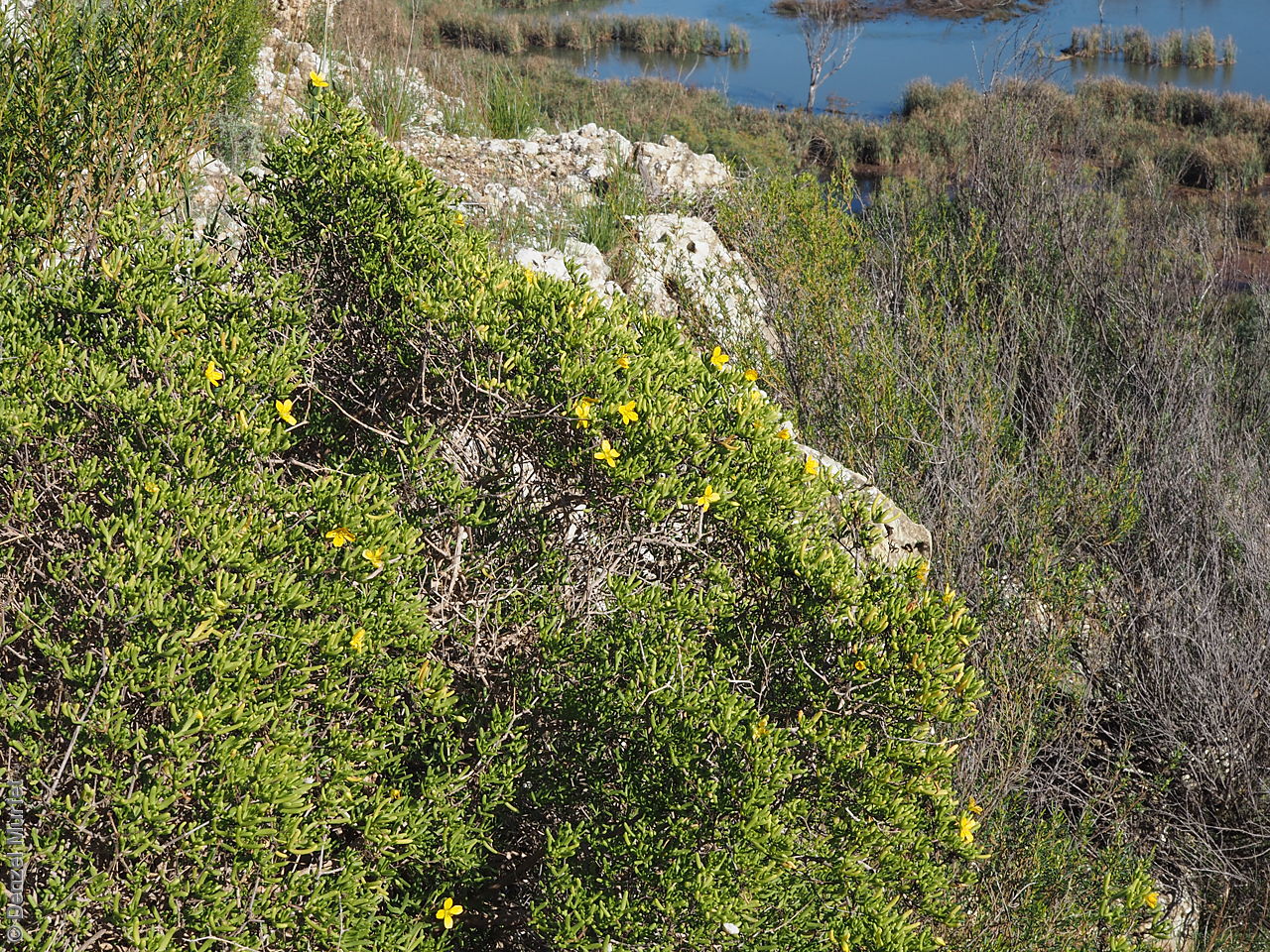
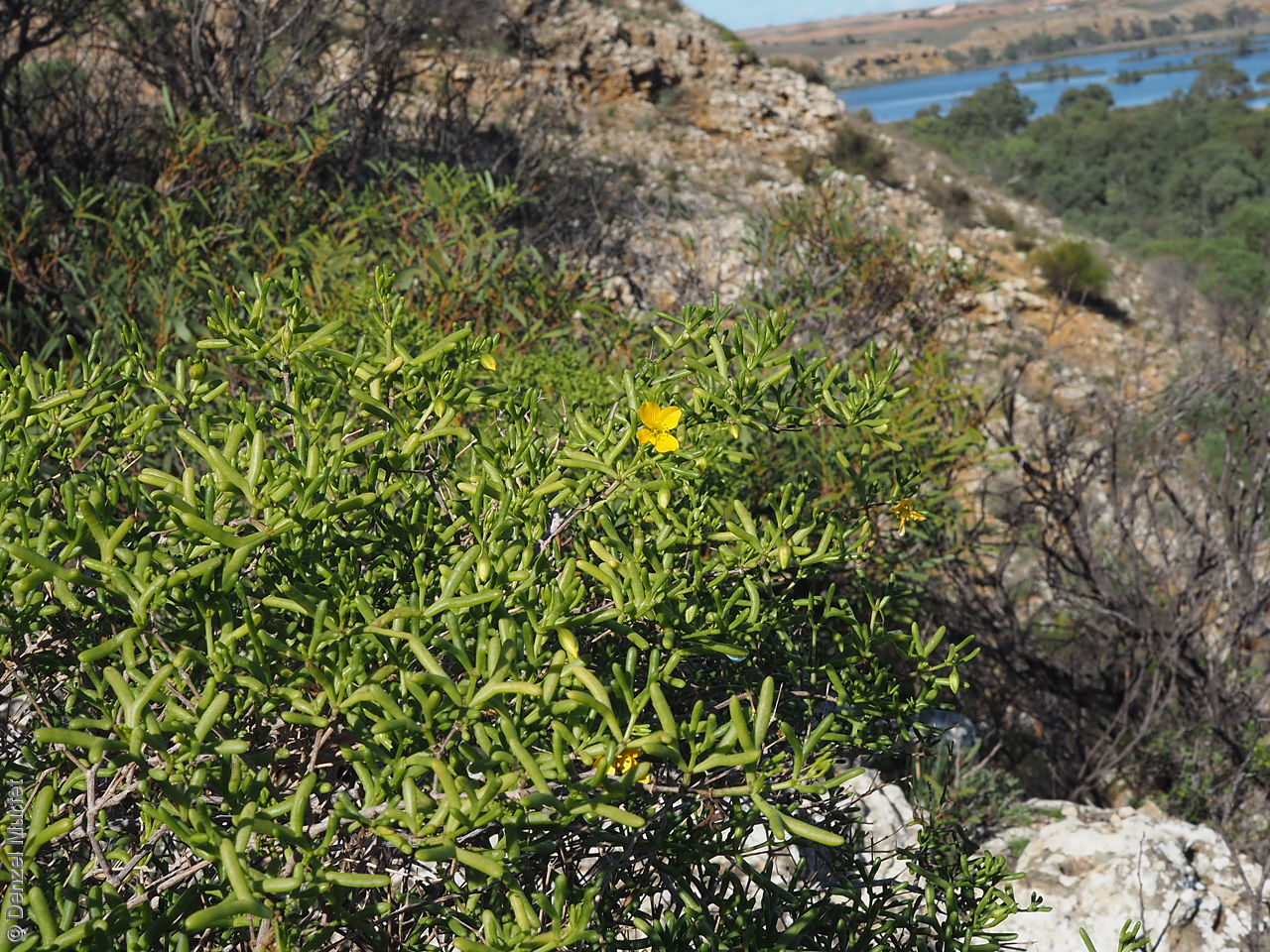
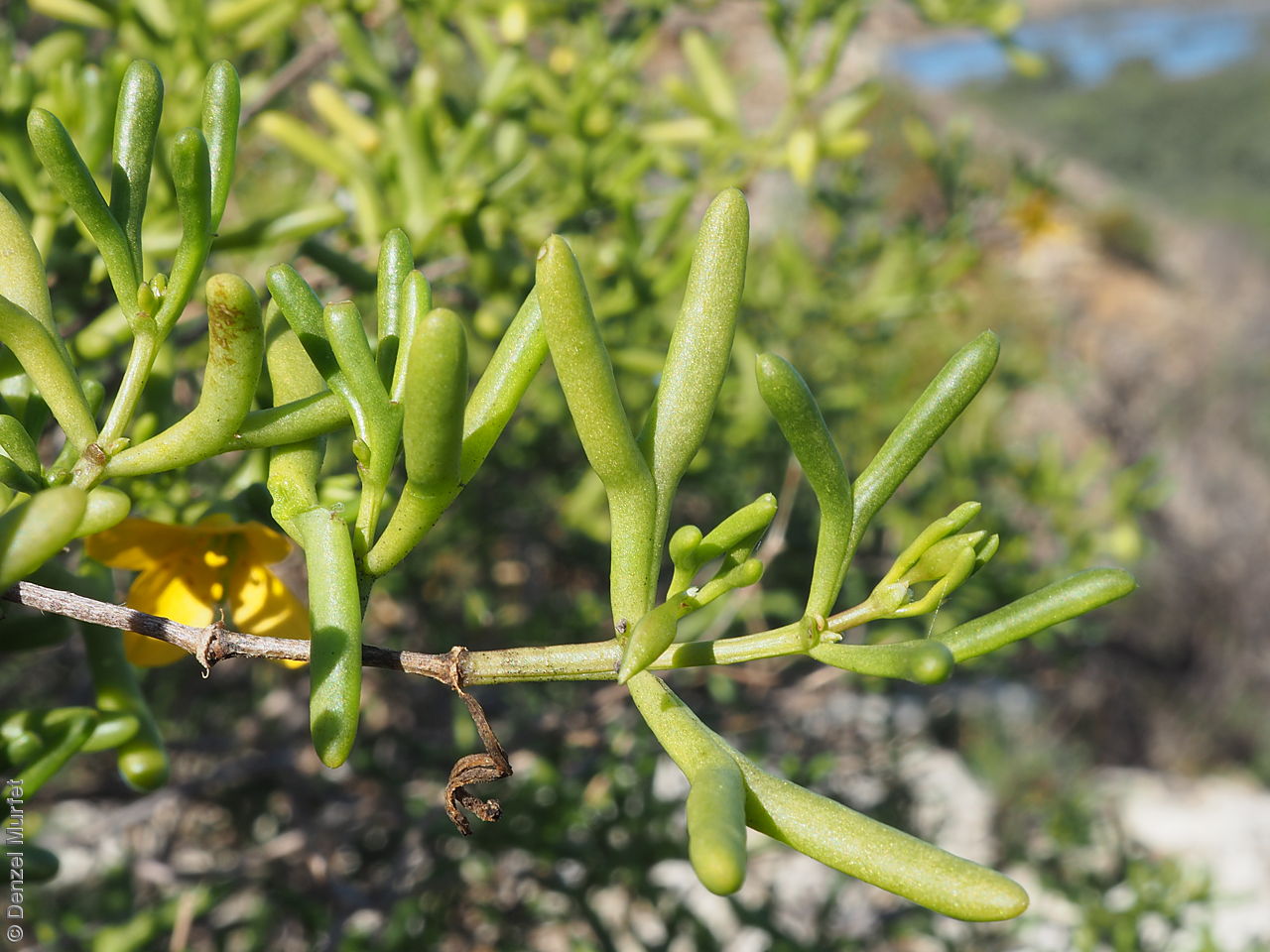
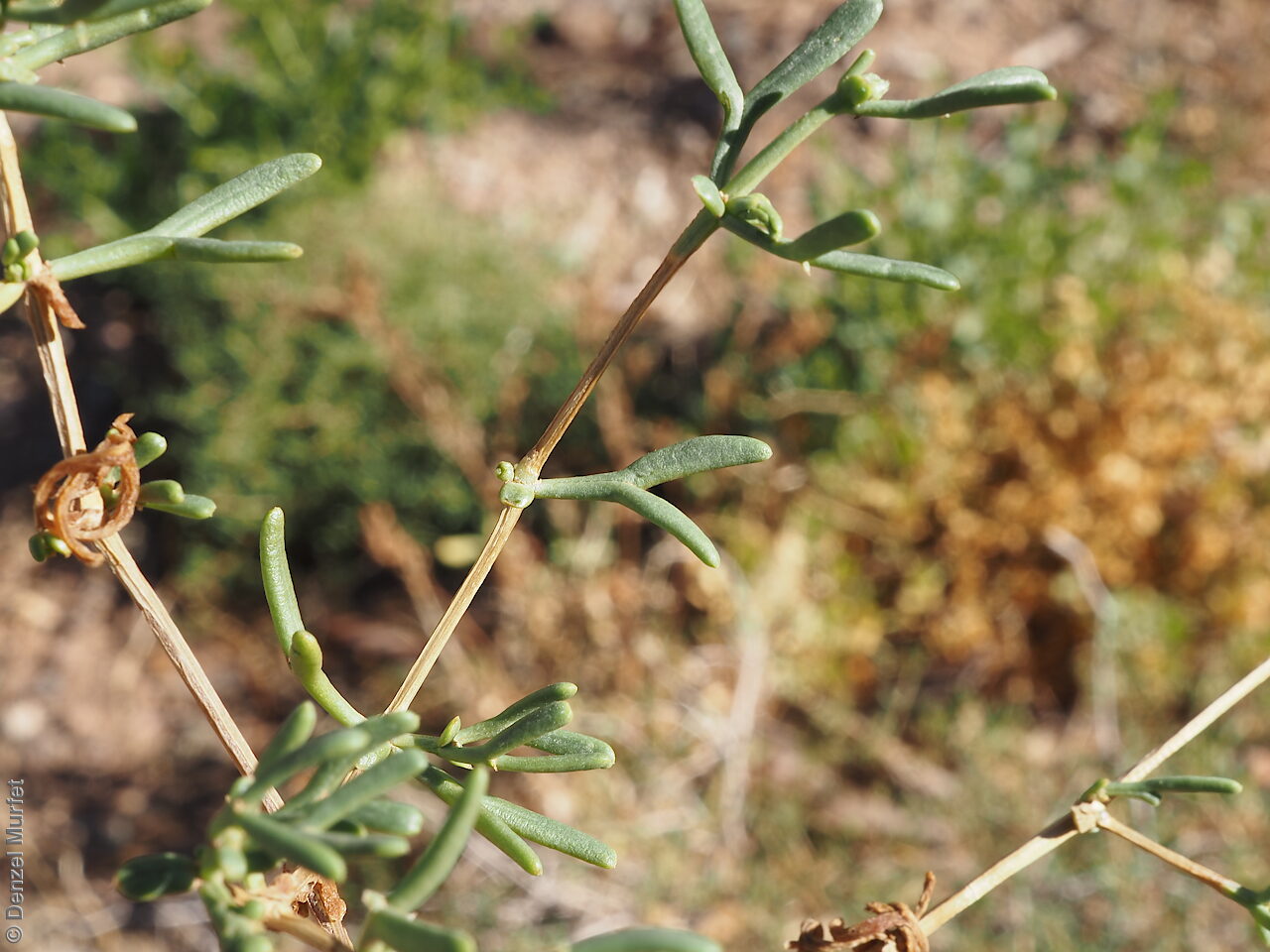

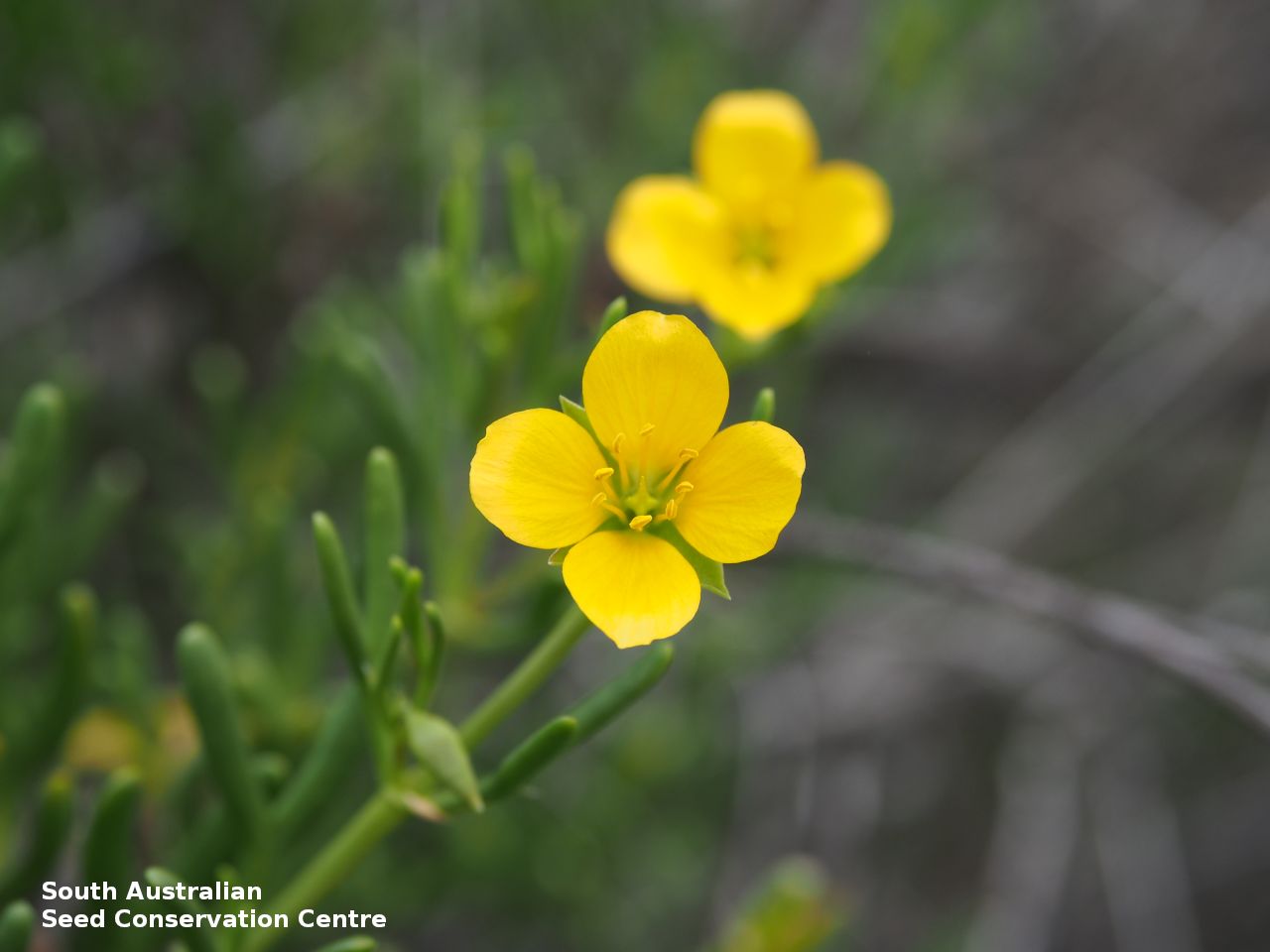
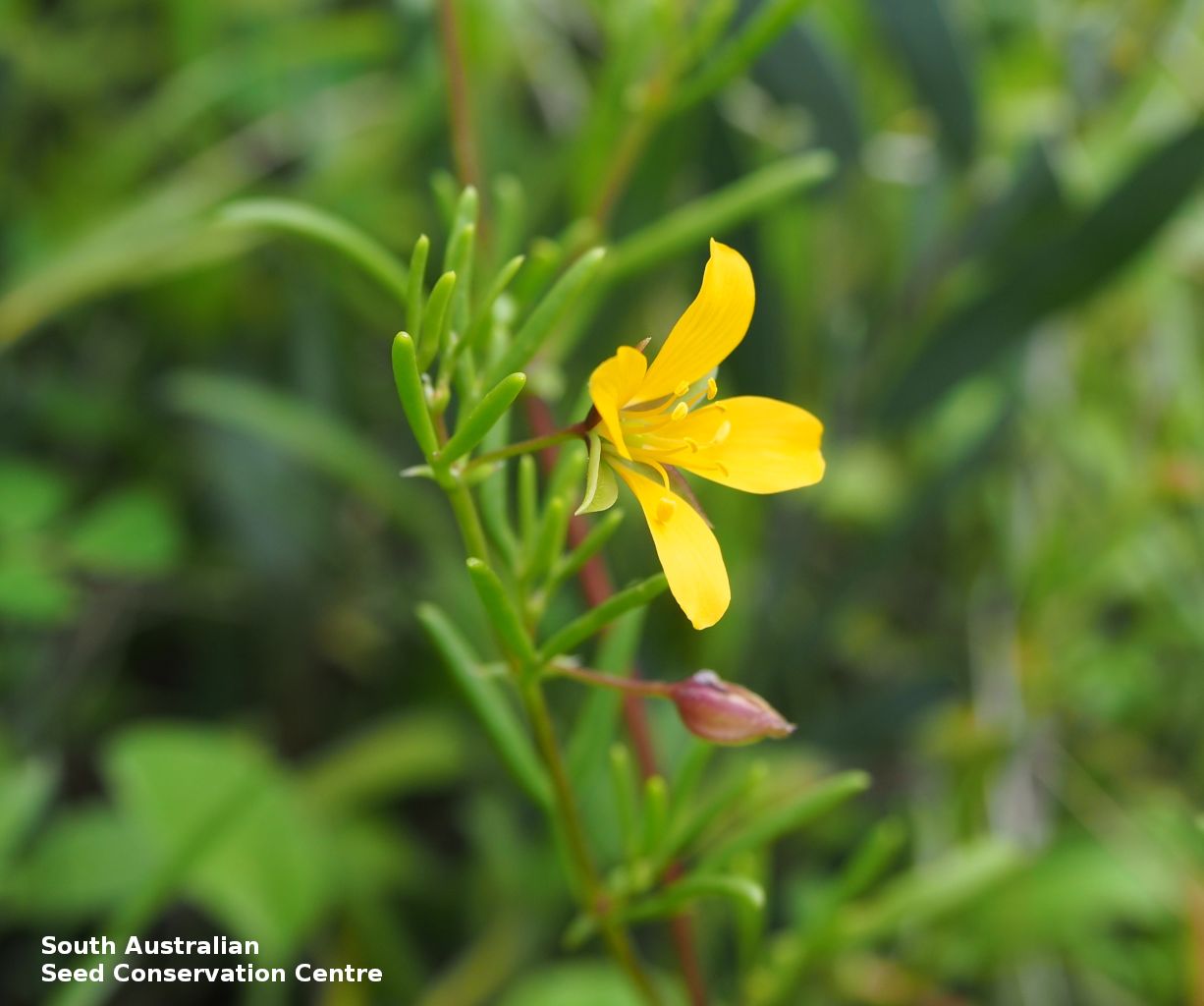
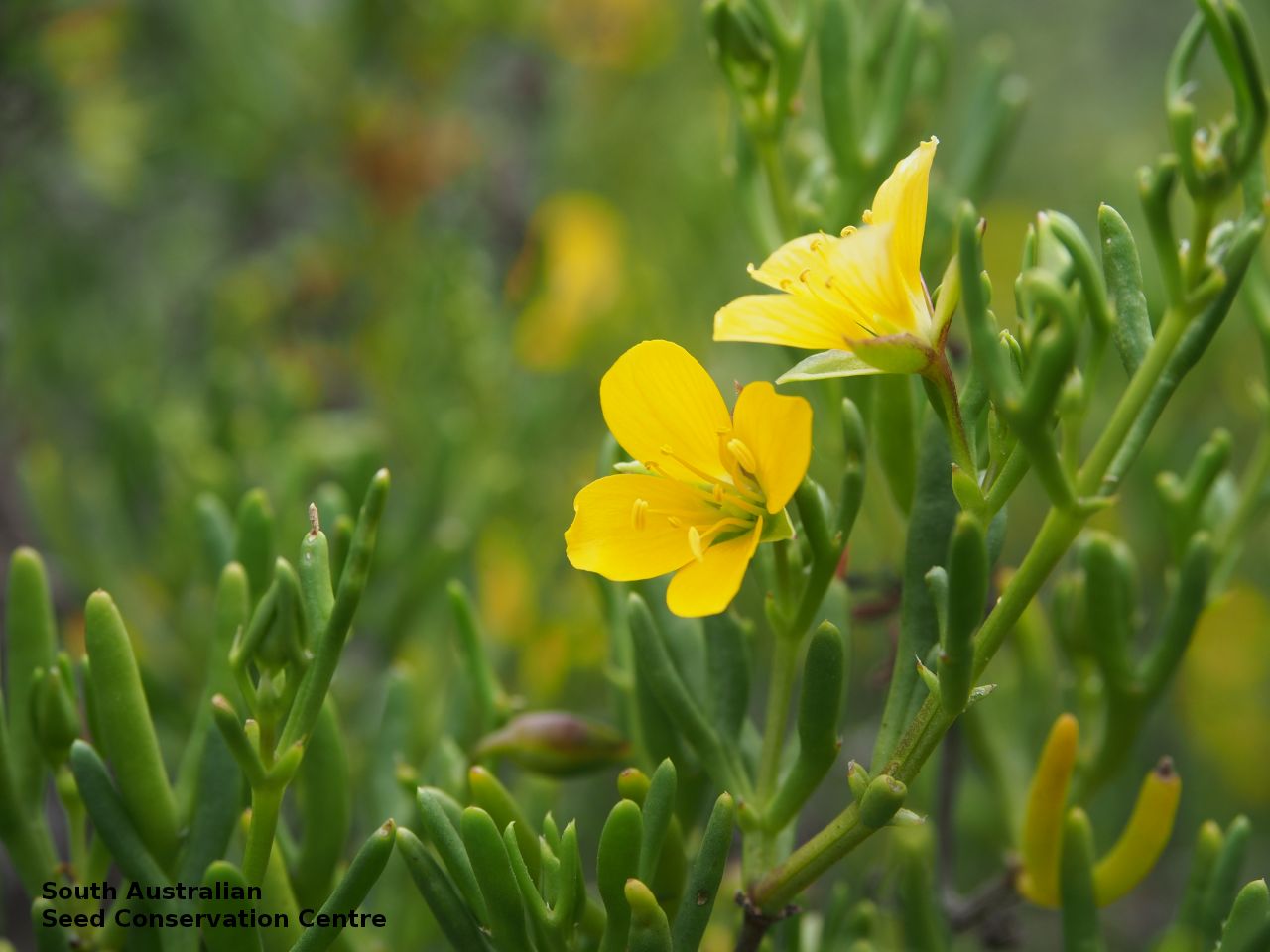
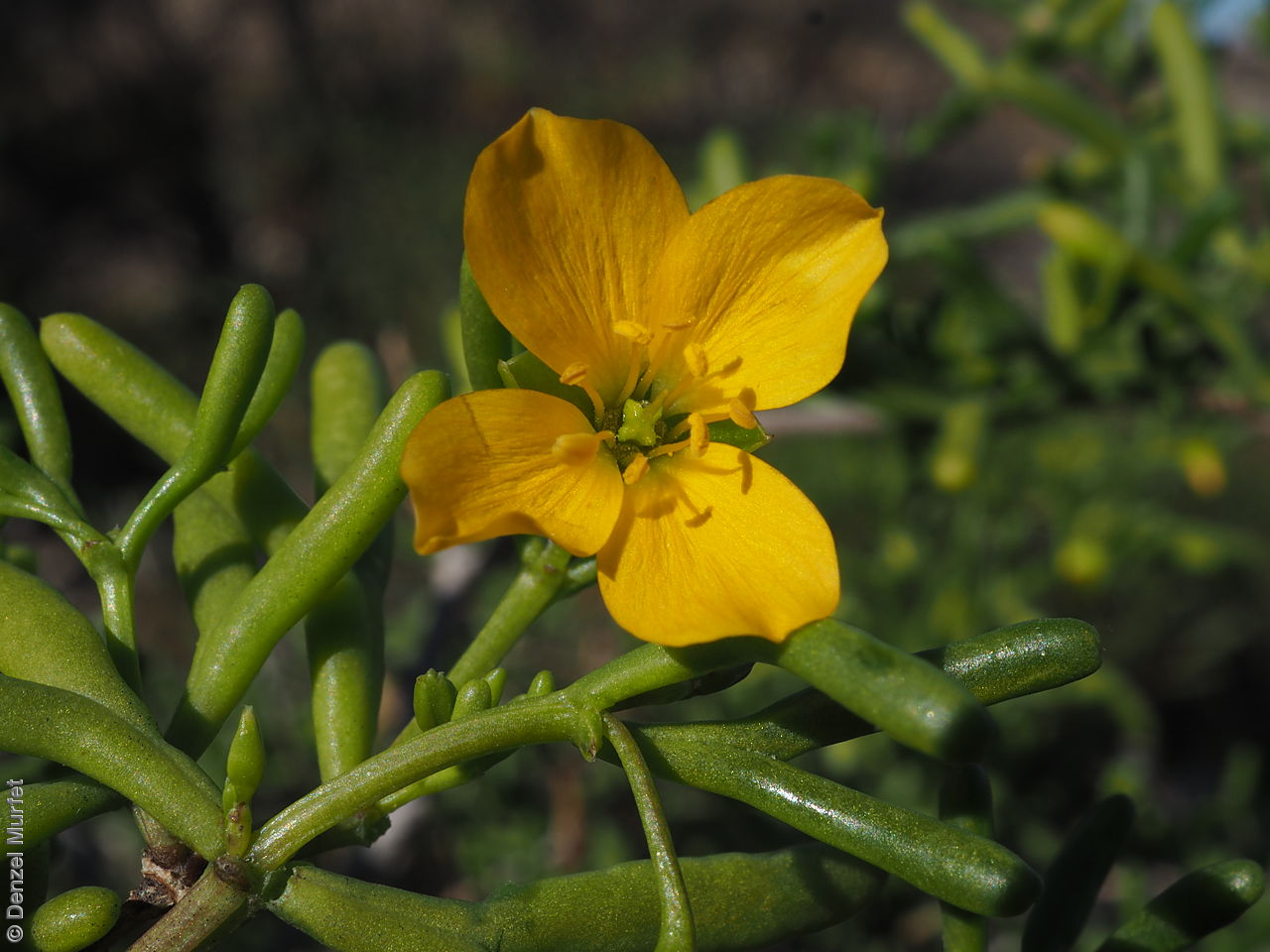
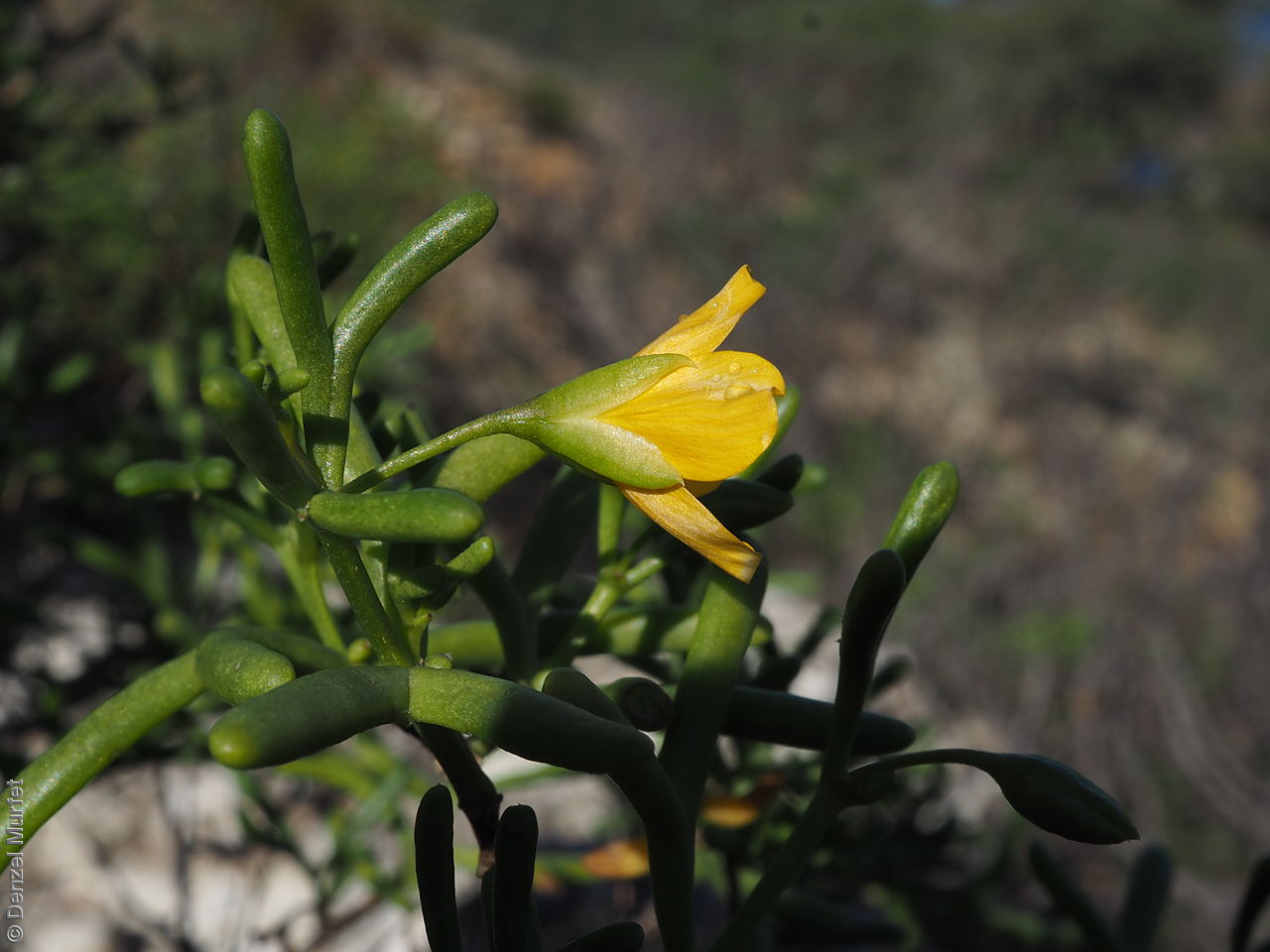
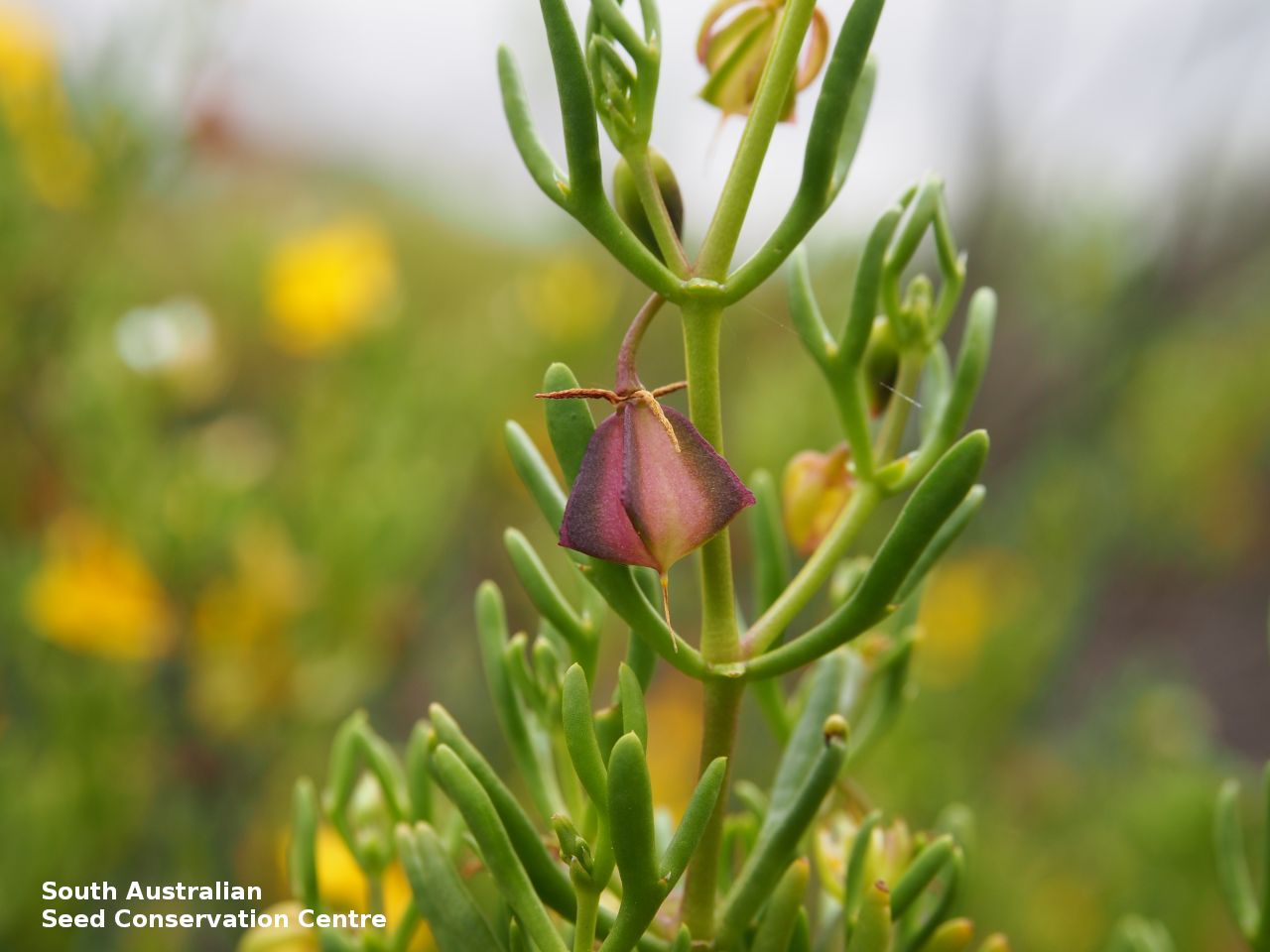
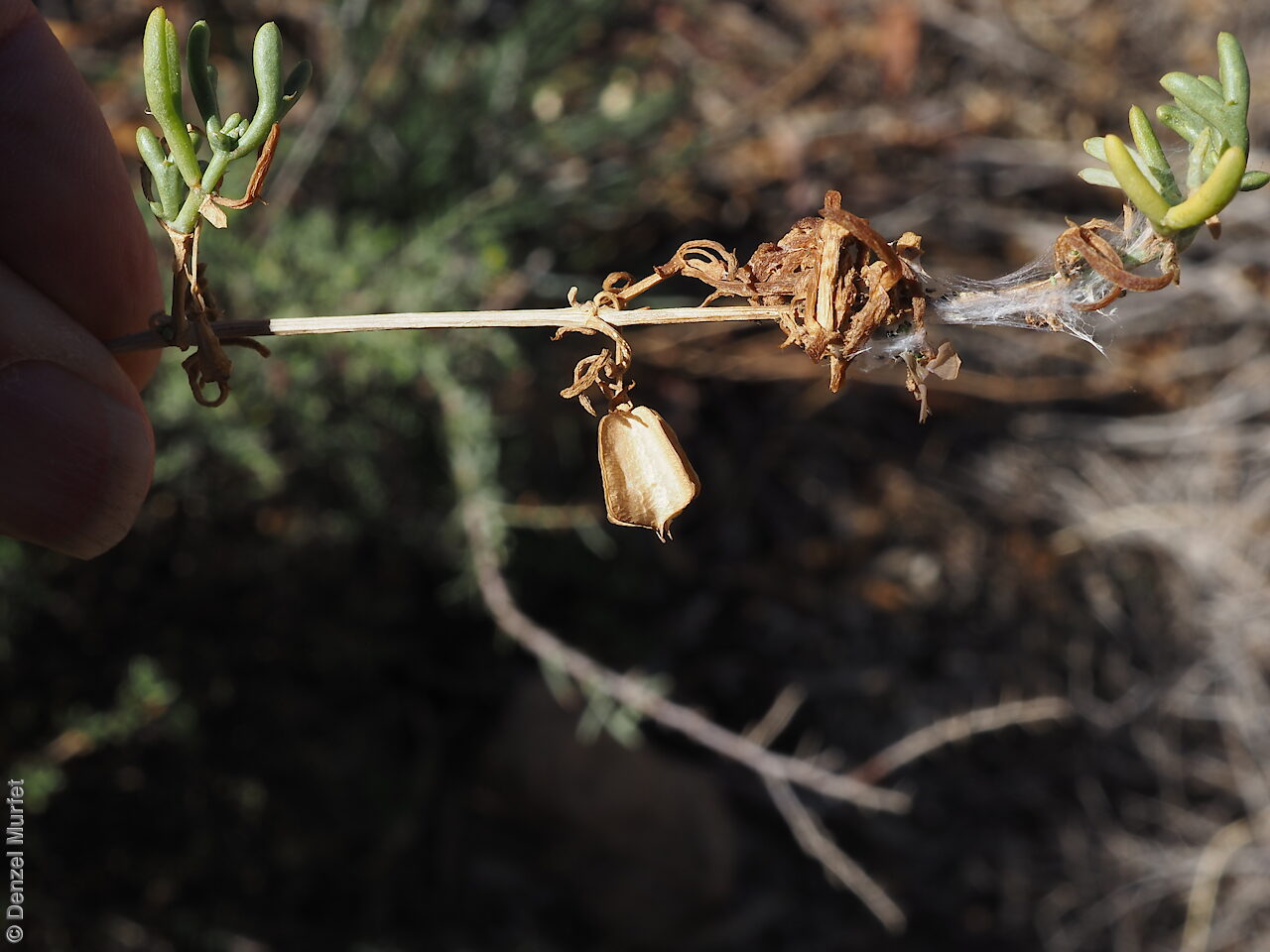
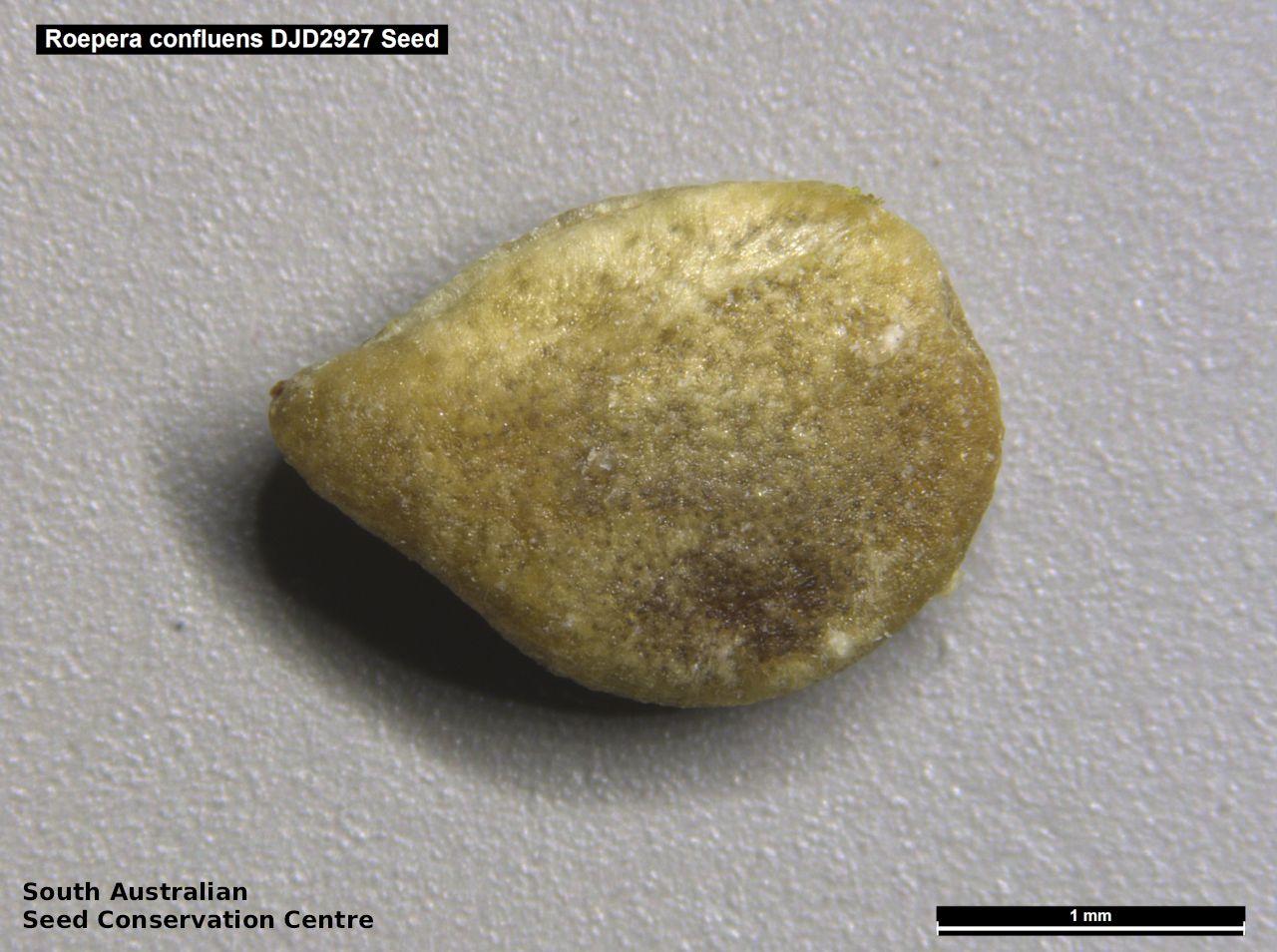
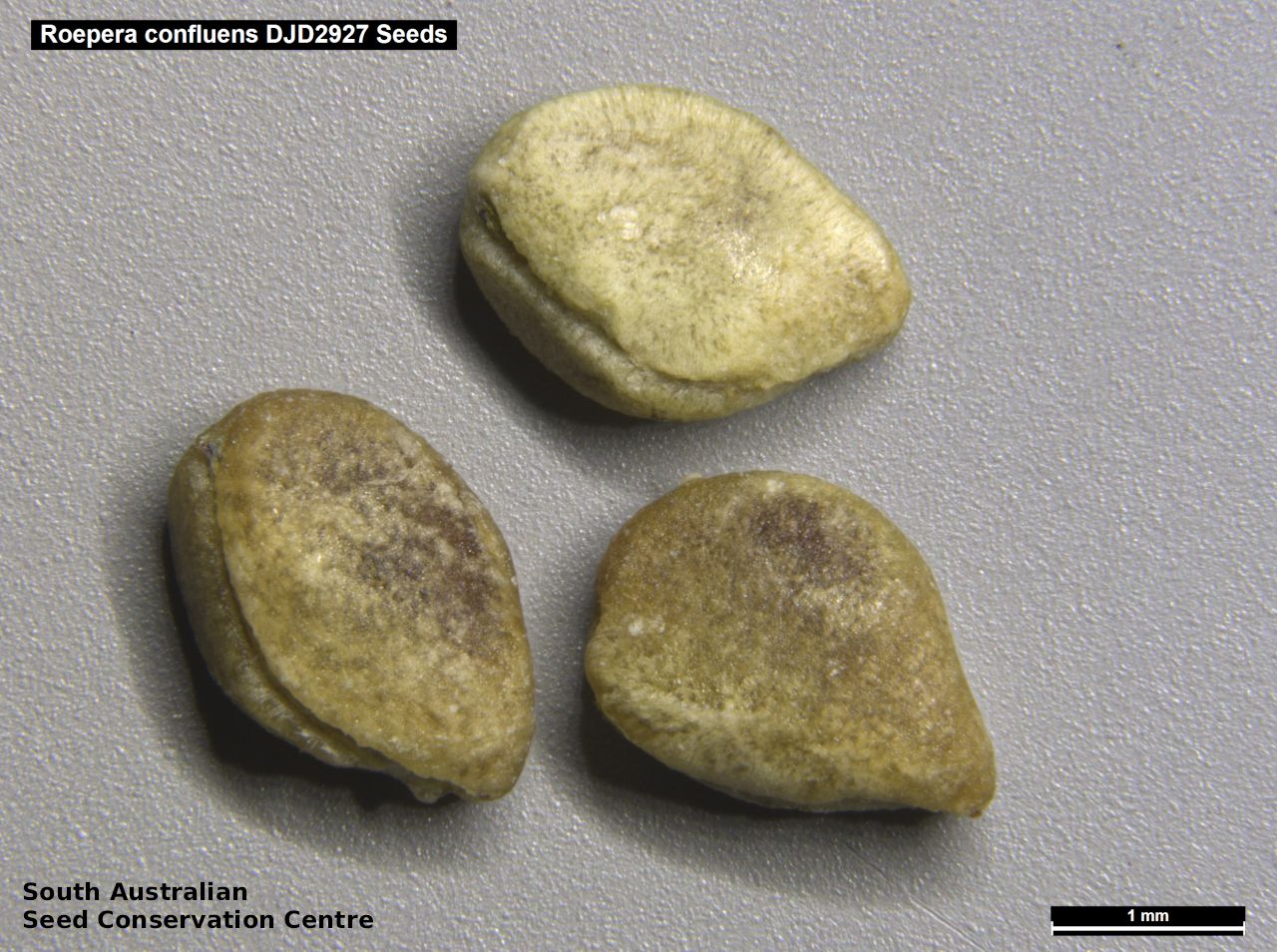

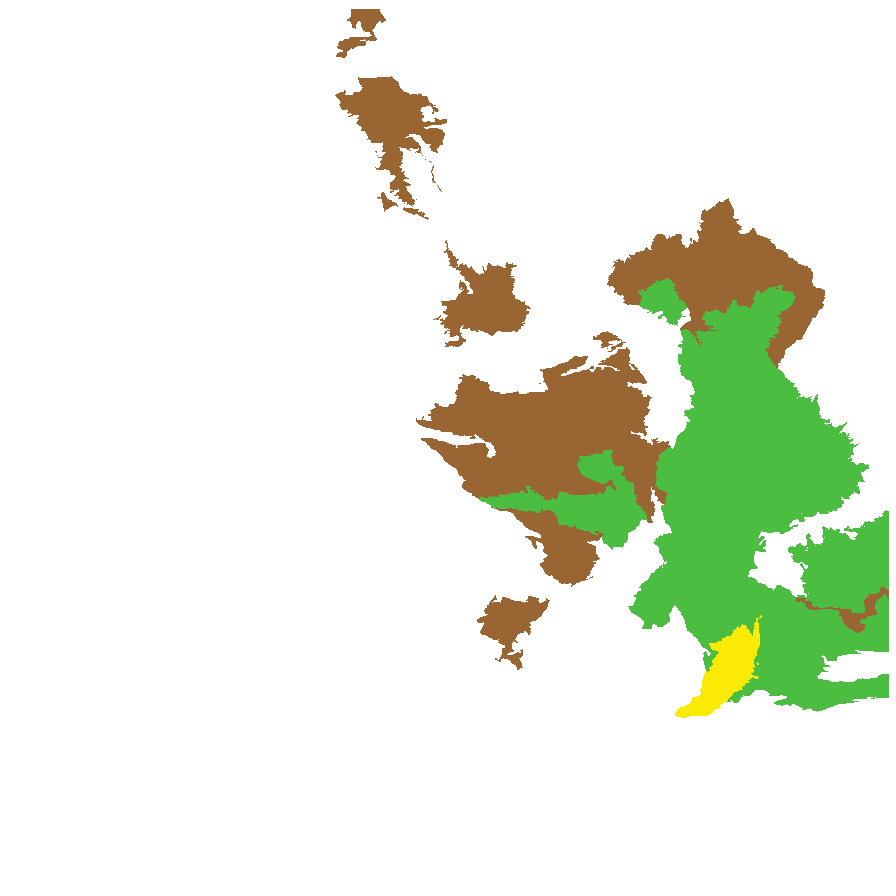
Botanical art
Prior names
Zygophyllum confluens
Zygophyllum billardierei, partly
Common names
Forked Twinleaf
Etymology
Roepera (formally Zygophyllum which is from the Greek 'zygon' meaning pair and 'phyllon' meaning leaf; referring to the pair of leaflets making up each leaf) is named after Johannes August Christian Roeper (1801 -1885), a German botanist and physician. Confluens from the Latin 'com' meaning with or together and 'fluere' meaning to flow;
Distribution and status
Found in the central part of South Australia, from the Gammon Ranges to the Fleurieu Peninsula, growing on quartzite rocks, limestone cliffs and in sandy soils. Also found in Queensland and New South Wales. Native. Common in South Australia. Rare in the other states.
Herbarium regions: Lake Eyre, Gairdner-Torrens, Flinders Ranges, Eastern, Eyre Peninsula, Northern Lofty, Murray, Southern Lofty, Green Adelaide
AVH map: SA distribution map (external link)
Plant description
Erect or prostrate shrub to 1 m high, sometimes scrambling over other plants. Leaves succulent with leaflet continuous with the petiole, linear, cylindrical to flat, to 25 mm long and 3 mm wide, tips blunt with a tiny point. Flowers yellow, with 4 sepals, 4 petals and 8 stamens. Flowering between March and October. Fruits are reddish 4-angled (like wing) capsules, to 11 mm long, apex truncate with 1-2 seeds per cell. Seeds are pale brown semi-flat, ovoid to 2.5 mm long and 1.5 mm wide. Seed embryo type is spatulate fully developed.
Seed collection and propagation
Collect seeds between May and December. Collect semi-dried and dried capsules by running your hands through the stems of the plant. Mature fruits will come off easily and will have a hard and dark seed inside each segment. Place the capsules in a tray and leave to dry for 1 to 2 weeks, depending on how green the fruit is. Then rub the dried capsules to dislodge the seeds. Use a sieve to remove the unwanted material. Store the seeds with a desiccant such as dried silica beads or dry rice, in an air tight container in a cool and dry place. Seed viability is usually high.
| Location | No. of seeds (weight grams) | Number of plants | Date collected | Collection number Collection location | Date stored | % Viability | Storage temperature |
|---|---|---|---|---|---|---|---|
| BGA MSB | 1,750 (11.5 g) 1,750 (11.5 g) | 50+ | 1-Nov-2006 | DJD643 | 1-Aug-2007 | 100% | -18°C |
Number of plants: This is the number of plants from which the seeds were collected.
Collection location: The Herbarium of South Australia's region name.
% Viability: Percentage of filled healthy seeds determined by a cut test or x-ray.